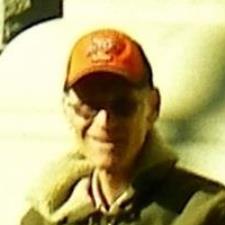
Carl H. answered • 03/22/15
Tutor
New to Wyzant
Dr. H-Over 20 Years Exp. Teaching/Tutoring Chemistry and Editor-Author
First, remember that for any gas law problem, you don't need to memorize all of the
different gas equations. Only one, the Ideal Gas Law, FV=nRT is needed. Any equation
you need can easily be derived from this by placing all unchanging values on one side
of the "=" and all changing values on the other side.
In this problem, what are the unchanging values? Write them all down:
P; the pressure does not change because we are told that it does not.
n; n is the number of moles of gas-it doesn't change; no gas escapes or is added.
R; R is the Universal gas constant-it always has values of
0.81206 (L • atm)/(mol • K) OR 8.314 J/(mol • K)
The value of R you use depends on the units given in the problem;
The values that are changed are:
T; Temperature (always put into Kelvins);
in this case Tinitial = 25 oC + 273.15 = 298.15 K (the STP temp)
and Tfinal = -196 oC+273.15 = 77 .15 K
K = oC + 273.15 COMMIT TO MEMORY!
V; Volume is the value changing to some new value:
Vinitial = 5.6 L
Vfinal = ? (the answer)
Vfinal = ? (the answer)
SO: rearrange the equation to put unchanging values on one side
and changing values on the other:
PV=nRT divide both sides by T
We will use terms Tinitial and Tfinal or Ti and Tf
and Vinitial and Vfinal or Vi and Vf
PiVi = nR now, divide both sides by V
Ti Write these math functions out, and see how things
Ti Write these math functions out, and see how things
cancel if you struggle with algebra
To get Vi/Ti = nR/P and BECAUSE the value of nR/P doesn't change,
Vi/Ti = nR/P = Vf/Tf
THIS IS CHARLE'S LAW: Vi = Vf we can do this because if
Ti Tf A = B = C, then A = C
SO take Charle's Law equation, and rearrange for the unknown, Vf
Vf = ViTf = (5.6 L)(77.15 K) = 1.4 L
Ti 298.15 K
NOTE the K's cancel, and our answer is in Liters, as it should be.
Be meticulous and write down all your units, make sure they cancel
so your answer has the right units. If they don't cancel while doing the math,
SOMETHING IS WRONG, and start over.
Also, make sure to include the units in the answer. The question says
"what is the new volume?" so an answer of 1.4 is not completely accurate.
If the question asked "what is the new volume in liters?" then 1.4 is acceptable.
Check sig figs - the least precise measurement is 5.6 L, so the answer can
be no more precise than having 2 sig figs.
Finally, the last step of all problems is to ask yourself -
"does the answer make sense?"
In this case, a balloon of gas is cooled in liquid nitrogen
(you may recall a class demonstration); as you cool a gas, the molecules
have less energy and move slower, hitting the container walls with less
force, so the volume should go down. Going from 5.6 L to 1.4 L seems perfectly
reasonable if you cool the balloon. If the volume went from 5.6 L to 23,591.331 L,
alarm bells should be ringing!
Why did I go to the trouble to derive Charle's Law? If you are taking an exam
and freeze-just relax; you can derive any of the gas laws from PV=nRT.
AND if more than two of the parameters change, you MUST know how to use PV=nRT.
SUMMARY: Changing values on one side, unchanging values on the other,
remove the unchanging values and set initial values equal to final values.
Put T into Kelvins. NOW, try the same thing for Boyle's Law.





